Importance of Kathak
There
are two main divisions in Kathak - nritta and nritya. Nritta means taallayashrayam yuktam i.e. exceptional
application of taal (beat) and laay (speed), and Nritya means
presentation of emotion through meaningful words or songs on rhytmn.
Today's Kathak can be vigorous like taandav or gentle like laasya
(delicate).
*Kathak
is based on North Indian classical music using different Raagas
and different Taalas.
It
is taal/percussion/ rhythm based. It involves quick body movements
against noncewords, these movements being varied as toda, paran,
amad etc.
The
unique emphasis on footwork sets kathak apart from other forms.
The dancer puts on more and more ghungaroos (bells) and performs
to more and more difficult beats. This footwork is called tatkaar.
Kavitta is an important part of Kathak. In this meaningful words are set
to music (bit) and rhythm (chhand) and these are varied & dancers
make improvised movements on it.
Kathak
employs more of bhramari-circle or chakri as compared to other dance
forms. |
The
following musical instruments are used in Kathak Dance |
 |
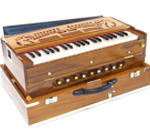 |
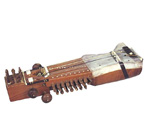 |
| Tabla |
Harmonium |
Saarangi |
| |
 |
|
| |
Flute |
|
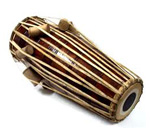 |
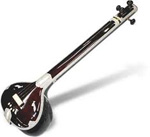 |
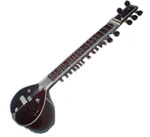 |
| Pakhawaj |
Taanpura |
Sitar |
|
Dresses
worn in Katkhak are very special Ghagra Choli, Mughal dress.
Kathak
specializes in expressing emotions or bhaav alongside the
popular classical musical compositions thumri.
Kathak
employs simple and eloquent hand gestures.
When
the Kathak dancer makes a presentation even ordinary people should
be able to appreciate it. This is the goal of every Kathak Dancer. |
|
| For training on Kathak Please refer our Book Kathak Margadarshan and Audio CD Sangeet Parampara. |
| For basic knowledege of Kathak refer our VCD "Kathak a Divine Spirt" |
| |







